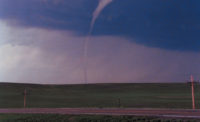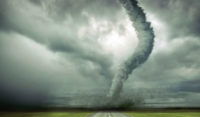Weather-Related Blackouts Doubled Between 2003 and 2012

The number of electrical outages affecting 50,000 or more people for at least an hour doubled during the decade up to 2012, according to Grist. Most of the blackouts were caused by damage to large transmission lines and substations during extreme weather events, a new analysis from nonprofit Climate Central says. Michigan has the most outages, followed by Texas, Ohio, Pennsylvania and Virginia.
The researchers noted the two main drivers of the trend as:
- Climate Change: “A warming planet provides more fuels for increasingly intense and violent storms, heat waves, and wildfires, which in turn will continue to strain, and too often breach, our highly vulnerable electrical infrastructure.”
- Heavy Downpours and Flooding: “Since 1990, heavy downpours and flooding have increased in most parts of the country, and the trend is most dramatic in the Northeast and Midwest. Some of this heavy rain is likely to be associated with high winds and thunderstorm activity. Researchers have found that these regions have already seen a 30 percent increase in heavy downpours compared to the 1901-1960 average.”
Solutions include more small wind and solar power installations build close by to where electricity is needed, and, the Grist article comments, an overhaul of the U.S. electrical power grid system.
Looking for a reprint of this article?
From high-res PDFs to custom plaques, order your copy today!




